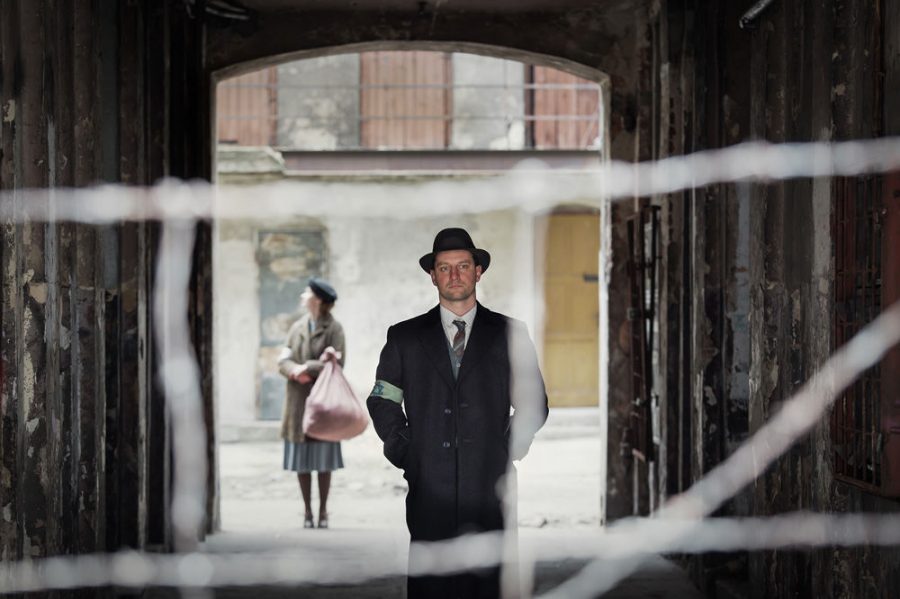History of the Warsaw Ghetto comes to life in documentary
Published January 24, 2019
Who Will Write Our History – Teaser from Katahdin Productions on Vimeo.
“Who Will Write Our History” is the question that plagued Jewish-Polish historian Emanuel Ringelblum as the Nazis were sealing up Jews in the Warsaw Ghetto. Ringelblum worried about what false history the Nazis would write about the Jews if they succeeded in wiping out Jewish culture.
ADVERTISEMENT
In an act of defiance, Ringelblum led a group of journalists, scholars and community leaders determined not to let Nazis write their history and formed a secret project called Oyneg Shabes. Its mission was to fight back against Nazi propaganda by creating an archive of Jewish life.
“Who Will Write Our History” is writer/director/producer Roberta Grossman’s excellent documentary about that heroic effort, which created the most significant cache of eyewitness accounts of the war. The documentary is based on historian Samuel Kassow’s book of the same name. Kassow is among the scholars interviewed in the film.
In honor of International Holocaust Remembrance Day, “Who Will Write Our History” will be shown Sunday, Jan. 27, at Landmark Plaza Frontenac Cinema.
The film will be shown simultaneously around the world in more than 100 locations as part of a global Holocaust Remembrance Day event. The screenings all include a post-film discussion streamed live, featuring Kassow, Grossman and executive producer Nancy Spielberg.
Grossman’s previous documentaries include “Blessed Is the Match: The Life and Death of Hannah Senesh.” This new film has been featured at several Jewish film festivals and opened in New York Jan. 18.
ADVERTISEMENT
The documentary is a polished, high-quality production that includes interviews with scholars and historians, readings from Oyneg Shabes writings, rare archival footage and stills, as well as excellent dramatic re-enactments, often shot on location. All elements are smoothly blended into a mostly chronological narrative.
The film notes at its start that “words spoken by the actors in this film are taken directly from a secret archive in the Warsaw Ghetto,” which adds to the film’s compelling feeling. The first voice we hear is Joan Allen as Rachel Auerbach, a well-known journalist who was one of the Oyneg Shabes writers. Jowita Budnik portrays Auerbach on screen in a re-enactment of Auerbach’s return to Warsaw shortly after the war, hoping to find the archive hidden from the Nazis. The film uses that as a framing device to draw us into its remarkable story.
Adrien Brody provides the voice of Emanuel Ringelblum, and several other members of Oyneg Shabes are heard, along with several historians who provide background and narration of events.
The secret organization Oyneg Shabes was formed by Ringelblum shortly after the Nazis herded Jews into and sealed the Warsaw Ghetto. Ringelblum quickly realized that the Nazis were using footage of the misery of the ghetto to create a false record of Jewish life. With the ghetto’s social aid society as a cover, the 60 members of Oyneg Shabes started collecting writings about Jewish life and culture, as well as supporting documents.
The film generally follows a chronological path, so we see how their work evolved as well as how the situation for the Jews worsened. The film covers the organization’s work and life in the Warsaw Ghetto. Even as it documents the courageous efforts of this organization, some of the archival footage, unsurprisingly, is difficult to watch, and audiences should be prepared.
Oyneg Shabes collected stories and documents of ordinary daily Jewish life, following the model of the YIVO Institute for Jewish Research. The secret archive was started with the goal of preserving a record of Jewish life and culture as a counterbalance to what the Nazis were recording and would say about the Jews. However, as Nazi intentions became clearer, it became a way to collect documents and record evidence of war crimes.
Oyneg Shabes also received reports on what was happening to Jews outside the ghetto, providing some of the first eyewitness reports of atrocities.
Some of the writings are extremely moving and inspiring in their defiance. One comes from a teenager as the organization was burying its archive as the Nazis emptied the ghetto.
“What we were unable to cry and shriek out to the world, we have buried in the ground,” wrote Dawid Garber, 19. “I would love to see the moment when the great treasure is dug up, and scream the truth at the world.”
















